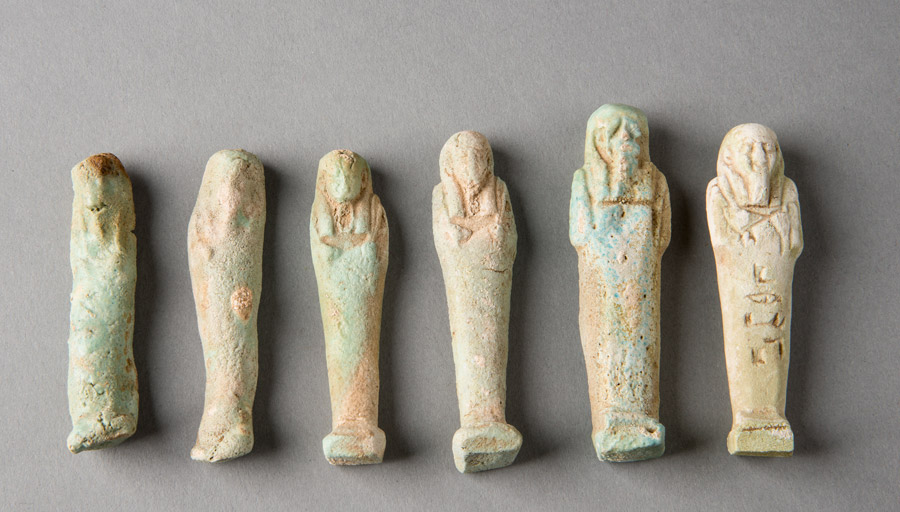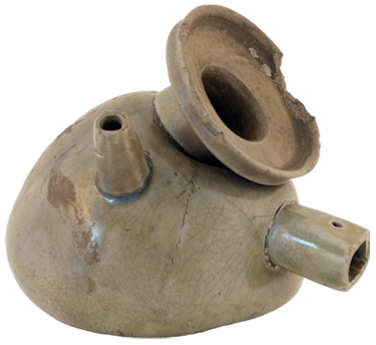Crooked Servants for the Dead

- Ushabti figurines
- Glazed faience
- Terenouthis, Egypt
- Graeco-Roman period, ca. 332 BCE–300 CE
- Kelsey Expedition, L to R: KM 92602, KM 92570, KM 92475, KM 92297, KM 92506, KM 92269

Ushabti figurines were buried with ancient Egyptians of high status to act as servants in the afterlife—the more the better. These figurines are made of faience, a molded and glazed sand paste that was fired in a kiln. The process often went wrong, but this was not a problem. The ushabtis could still perform their tasks no matter how damaged they appeared.

